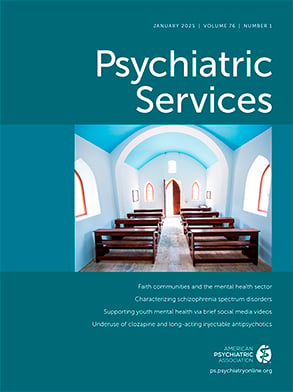High rates of comorbid general medical conditions and undertreatment of these conditions among people with mental illness are well documented. Two studies examine use of specialized general medical care in this population. In the first, researchers compared use of obesity-related care among more than 250,000 obese primary care patients with and without mental illness in the Veterans Health Administration. Laurel Anne Copeland, Ph.D., M.P.H., and colleagues found that receipt of obesity-related care—counseling, medications, and bariatric surgery—was more common among patients with psychiatric diagnoses than among those without them (46% versus 31%). The authors linked use of such care to receipt of obesogenic psychotropic drugs (
page 230). The second study used administrative claims data to identify nearly 29,000 adults with schizophrenia who received care in a ten-year period in Alberta, Canada. Lauren C. Bresee, Ph.D., and colleagues found that coronary artery disease was significantly more prevalent in this group than among patients without a schizophrenia diagnosis (20% versus 14%). Although patients with schizophrenia had higher rates of general practitioner visits, they were less likely to visit a cardiologist or to undergo coronary revascularization (
page 237). Because of the link between second-generation antipsychotics and several cardiometabolic conditions, routine monitoring of risk factors is recommended. The Economic Grand Rounds column presents data from a 2010 survey of major public and private U.S. mental health treatment systems indicating limited adherence to such monitoring (
page 202). The column's authors and the authors of Taking Issue (
page 199) highlight the costs and consequences of failure to monitor.

